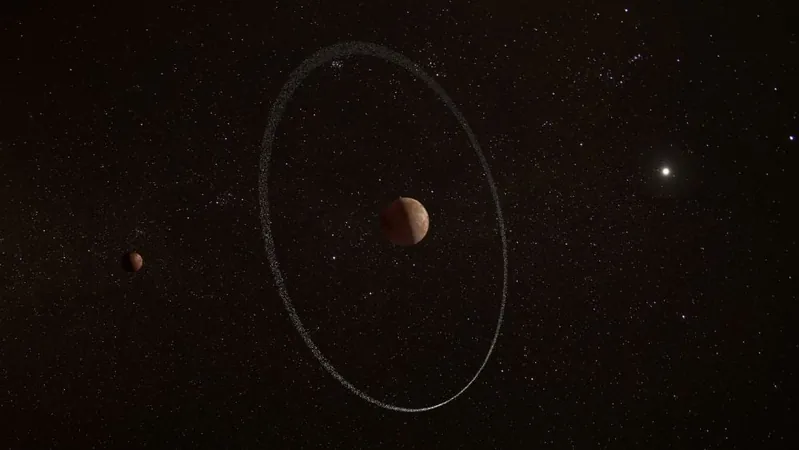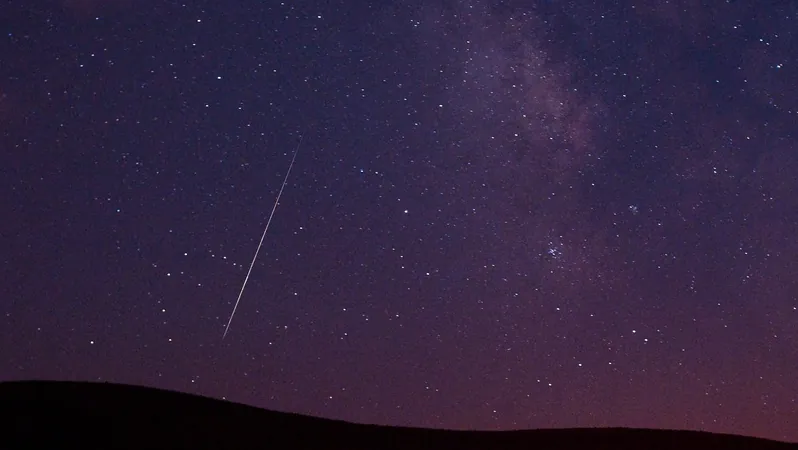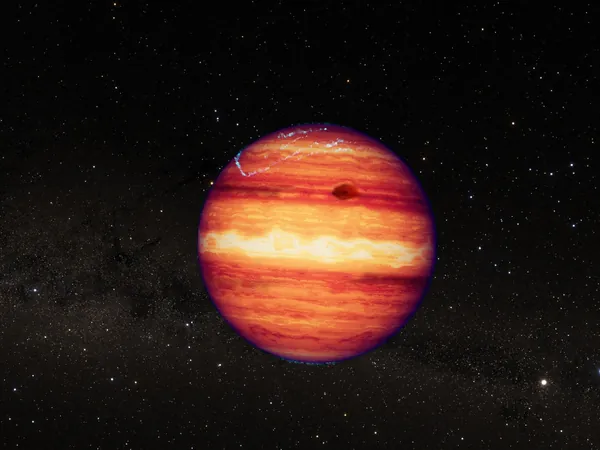
Quaoar: A Cosmic Mystery with Rings That Defy Explanation!
2025-07-08
Author: Sophie
The James Webb Space Telescope (JWST) continues to unveil the secrets of our solar system, shining a light on distant worlds like the Trans-Neptunian Object (TNO) Quaoar, located a staggering 41 astronomical units from the Sun. Recent findings from a collaborative team of researchers at the University of Central Florida, the Space Telescope Science Institute, and Kyoto University have unveiled astonishing new insights into this intriguing celestial body—particularly its puzzling ring system and its elusive hydrocarbon atmosphere.
Quaoar is no ordinary rock! With an estimated diameter of 1,110 kilometers and an unusual shape that’s more ‘squashed’ than spherical, it offers astronomers a unique case study. While flying past the orbit of Neptune, it presents two particularly striking features: its mysterious rings and the question of an atmosphere made primarily of methane.
Rings That Shouldn’t Exist?
Quaoar boasts two rings dubbed Q1R (outer) and Q2R (inner). What’s baffling is that they appear to violate the Roche limit—an area where moons should disintegrate into rings rather than form. These rings orbit outside the Roche limit, raising eyebrows and questions about their origins.
Initial observations hinted at a potentially thick hydrocarbon atmosphere. However, follow-up data from JWST has challenged that notion. The team used Quaoar’s occultation of a distant star to scrutinize its rings and atmosphere, leading to groundbreaking data that both affirmed and contradicted prior knowledge.
Symmetry and Variability: Rings in the Spotlight
The data from JWST revealed fascinating tidbits about Quaoar’s ring system. While earlier studies implied fluctuations in Q1R, JWST's observations presented a more symmetrical picture. Still, some irregularities pointed to potential internal structures, leaving scientists guessing.
Q2R exhibited striking variability, only detectable from one side of Quaoar. Remarkably, JWST updated the measurements of these rings with Q1R stretching approximately 4,096 kilometers and Q2R about 2,529 kilometers. The telescope also estimated that the particles forming the rings are at least 3-4 micrometers wide, suggesting we’ve only begun to scrape the surface of understanding the composition.
The Peculiarities of Ring Formation
The dynamics of these rings suggest they haven't yet clumped into a moonlet due to orbital resonances. Q1R interacts with Quaoar's existing moon, Weywot, in a mean motion resonance, and something similar is believed to affect Q2R. What’s even more mind-boggling is that some physicists propose the presence of yet-undetected ‘shepherd’ moons that might be influencing the formation of Q2R.
Atmospheric Mysteries Revealed!
In a significant twist, JWST failed to find any substantial atmosphere around Quaoar. This finding is crucial as it suggests that no seasonal variations are replenishing an atmosphere—which would have been anticipated if it existed. Instead, prior methane readings might have stemmed from cryovolcanic activity or collisions with other TNOs, mirroring phenomena seen in Enceladus and its contributions to Saturn’s rings.
As astronomers continue to probe the depths of our solar system, Quaoar remains an enigma. With limited observational time available for JWST, these findings might represent the pinnacle of our understanding for a while, setting a foundational reference for future explorations of this captivating dwarf planet. Are we on the brink of unraveling even more secrets about Quaoar? Only time—and the JWST—will tell!









 Brasil (PT)
Brasil (PT)
 Canada (EN)
Canada (EN)
 Chile (ES)
Chile (ES)
 Česko (CS)
Česko (CS)
 대한민국 (KO)
대한민국 (KO)
 España (ES)
España (ES)
 France (FR)
France (FR)
 Hong Kong (EN)
Hong Kong (EN)
 Italia (IT)
Italia (IT)
 日本 (JA)
日本 (JA)
 Magyarország (HU)
Magyarország (HU)
 Norge (NO)
Norge (NO)
 Polska (PL)
Polska (PL)
 Schweiz (DE)
Schweiz (DE)
 Singapore (EN)
Singapore (EN)
 Sverige (SV)
Sverige (SV)
 Suomi (FI)
Suomi (FI)
 Türkiye (TR)
Türkiye (TR)
 الإمارات العربية المتحدة (AR)
الإمارات العربية المتحدة (AR)